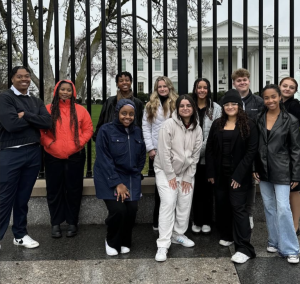On March 21, the SunTrust Auditorium lit up with Muslim imagery in Hollywood.
Well-known filmmaker Usame Tunagur eagerly presented his seminar, “Holly- Jihad,” an interpretation of popular Muslim imagery in mainstream culture.
Tunagur began his talk by informing the audience that his goal is to simply produce and promote diversity.
He explained that Hollywood brings about stereotypes which end up producing a society that heavily relies on biased and uneducated images and ideas.
Crammed with information, Tunagur’s seminar was made interesting by approaching Muslim imagery through a series of historical time periods. This approach made it quite clear as to how Islamic theories and images have been correctly, stereotypically, or falsely depicted.
The first clip, from the movie entitled The Terrible Turkish Executioner, filmed in the early 1900s, had me intrigued. The first film portrayal of the “mysterious Arabs in the Middle East,” was a violent depiction featuring swords, headless men, turbans and long dark beards.
Thus, Tunagur explained the concept of orientalism and how the fi lm industry used this inspiration to create a magical realm of the imaginary “East.” This realm, consisting of the “Arab Kit,” as Tunagur puts it, contains women in hijabs and burkas, belly dancers, snake charmers, and the never ending desert of wonders.
Historically, it can be interpreted that orientalism was concocted to further the concept of America’s Manifest Destiny. Reina Lewis’ quote really hit home. “The Orient is characterized as irrational, exotic, erotic, despotic, and heathen,” it said, thus revealing foreigners as uncivilized and predominantly backward in their way of life.
A film clip from The Sheik showed the unintelligent and mocking nature of filmmakers with inaccurate references and scenes of Muslims praying outside, in mosques and at home. Tunagur used the analogy, “It’s as if instead of eating bread during Holy Communion… you ate pizza.”
He is trying to show that the imagery of Muslims continues to be misconstrued by the few in the fi lm industry who choose to depict it.
Not to say that this should stop filmmakers from portraying the accurate nature of a culture or religious group.
It was hard to disagree with Tunagur’s points that filmmakers capitalize on what seems to be the “traditional portrayal” of the Muslim character to add the epic, mysterious and violent nature to fi lm. For example, in the 1960 fi lm, El Cid, stereotypical language of the Muslim villain is expanded upon in the form of extremists fighting for Islam.
This is not much different than the interpretations seen in films of the current decade, such as Traitor, which reveals not only the physical difference of Muslims with their violently aggressive personalities, but also the political realm of gender inequalities and lack of religious toleration for non-Muslims.
Tunagur effectively wrapped up the night by noting that the global imagination holds the power to consistently control the images viewed in films. This global perception of Muslims allows the mind to run rampant with inaccurate representations of the Islamic world.







Be First to Comment